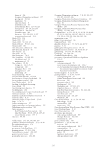Lake Eyre Basin Rivers 160 Non-use values are different from direct or indirect use of the resource. For example, many people live a long way from the Lake Eyre Basin but they still care about its long-term sustainability, even if they never visit it. For example, people in Brisbane or Sydney may be willing to pay to maintain its quality. This type of value is called an existence or non-use value (Pearce and Markandya 1989). Non-use values occur for several reasons. People might simply value existence care about it for their children or grandchildren care that others have the opportunity to experience its environment or feel it is their stewardship or spiritual responsibility to look after the Lake Eyre Basin. This was indicated during the proposed development of Cooper Creek in 1995 (see Chapter 17), when there was a groundswell of concern from communities around Australia about the potential impact on the values of the Lake Eyre Channel Country (see Chapter 7). These non-use values are likely to dominate any economic value assessment because the people living away from such a remote region dominate the numbers who gain their direct use value from the region. Together, these use and non-use values make up total economic value. It is possible to identify the total use value for the Lake Eyre Basin rivers and wetlands. We could measure how much income is derived for all of the pastoralists who derive an income from the floods of the Lake Eyre Basin. We could also conceivably measure the impact of tourism from the Fig. 18.1. There are many direct economic benefits from the rivers of the Lake Eyre Basin, including pastoralism and increasingly tourism, with visitors keen to experience the wonder of the outback rivers such as the Thomson River near Longreach (photo, A. Emmott).
Downloaded from CSIRO with access from at 216.73.216.131 on Nov 19, 2025, 9:00 AM. (c) CSIRO Publishing

















































































































































































































































































